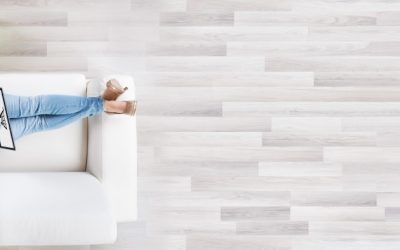Brands celebrate and promote packaging innovation. However, the greatest learning comes from failure. This article discusses a failure in human factors engineering and the ergonometric design of a custom dispensing squeeze bottle.
A major trend in the hotel industry is “Going Green”, the May 2021 HotelTech Report suggests. Hotels must focus on sustainability and eco-friendly services, water conservation, motion sensors, and reducing plastic and paper use. The focus on reducing plastic is resulting in packaging designs that could benefit from a much stronger focus on human factors engineering, usability studies, ergonomic and human-centered design.
Innovative Squeeze Package Design …or Not?
Some modern hotels are integrating new squeeze dispensing packaging into the bathroom to;
- Reduce the amount of small volume disposable plastic packages used during a guest visit (www.greengetaways.com.au/hotel-toiletries, Hotel Toiletries: A Change for the Better?)
- Reduce the volume of unused liquid shampoo and soap products that must be discarded.
 Figure 1: Sink and shower liquid dispensing systems.
Figure 1: Sink and shower liquid dispensing systems.
Product is dispensed by squeezing the bottle causing the valve to open and flow product from the bottom. To dispense product, the user must grip the wall-mounted bottle between the thumb and fingers and squeeze. To dispense more product, the bottle must be squeezed harder.

Poor Ergonomic Design, Usability, Human Factors Engineering and Dispensing Package Design
In the context of interior design, human factors engineering, and ergonometric design simply means to make the design more user-friendly. As a result, the space becomes more useful and enjoyable to occupy.
Unfortunately, the liquid product dispensing system shown in Figure 1 has several design and engineering flaws that violate good design practices and severely limits the usability of the dispensing packaging.
Ergonomic Design Flaw
A simulation of the hotel squeeze bottle performance was conducted using an engineering analysis tool called the finite element analysis. The goal of this modeling was to calculate the hand grip force needed to dispense soap. For the bottle thickness modeled, the predicted force is about 16 pounds (Figure 2). This force is significantly too high based on the published human performance normative data for adult grip and pinch strength. When considering user demographics and human capabilities the target activation force for the squeeze package should be 3 to 4 pounds. The high squeeze force severely limits the ability of most adults to expel useful amounts of product, particularly as the bottle empties.

Usability Failure
A user of this squeeze package design may try to compensate for the high force by attempting to grip the bottle between the fingers and palm of the hand. However, the packaging mounting system prevents a user from placing fingers behind the squeeze bottle.
Installations of this squeeze package dispensing system adjacent to a sink further limits usability by physically obstructing the user’s ability to properly grip the package.
Poor Dispensing Package Design Engineering
The hotel squeeze package dispensing system is mounted with the valve facing down so when squeezed by the user, liquid product is dispensed.
Bottles are never 100% full. The unfilled volume is called ‘headspace’. When a bottle is squeezed, the pressure in the headspace increases. When the headspace pressure becomes greater than the valve opening pressure, liquid is expelled. The amount of liquid dispensed depends on how much the user can deform the bottle with a pinch grip (Figure 2).
The blow molded bottle design has two engineering design shortcomings that significantly limit usability and functionality.
- Cylindrical Shaped Dispensing Bottle
Wall thickness and shape dominate the squeeze stiffness of a polyethylene bottle for dispensing applications. A cylindrical shape is very inefficient for a squeeze bottle. The dispensing forces required by the user rises linearly to dispense product. Recovery of the cylindrical shape is also very inefficient after being squeezed
- As the Bottle Empties, User Applied Forces Must Increase
As a bottle empties the headspace volume increases requiring the user to squeeze the bottle harder to dispense product.
Similar to the hotel bottle analysis, finite element analysis (FEA) was used to illustrate this human factors design problem. A ‘digital twin’ of a liquid dish soap dispensing package was created and modeled. The model was used to predict the volume of product dispensed as the headspace in the bottle increases as a result of usage (Figure 3).

The results of the simulation of the bottle squeezing are shown in Figure 5. Figure 5 shows that the volume of product dispensed decreases as the bottle empties and the headspace increases. From a human performance perspective, this means that the user must squeeze the dispensing package further as the bottle empties during use. (Stress Engineering Services, White Paper “Predictive Digital Twin of Squeeze Dispenser” PDF)

Summary
“Remember the user-functionality above all” is a primary tenant of hotel bathroom design. (A practical and functional bathroom in the hotel (paradyz.com)) as well as good squeeze bottle design practice. Although the concept of a conveniently mounted, multi-use squeeze dispensing packaging system is an innovative idea, this execution fails most all metrics for human-centered design, human factors engineering design, ergometric design and squeeze bottle usability design. The practical insights gained from the performance analysis of this packaging system can be a benchmark for learning what not to do!
Authors

-
- Clint Haynes, founder of the Cincinnati office of Stress Engineering Services, has steadily grown the Cincinnati practice area while introducing breakthrough capabilities. He has a specialized focus on areas of medical, outdoor, and product innovation.
- Jason Phillips, Group Creative Director, has more than 20 years of innovation and product development experience in consumer-packaged goods, durable products, human performance applications, and technology integration.
- Araya Amsalu, Group Human Factors and Systems Engineering Director, has more than 20 years of experience in engineering innovation, applying systems engineering and human factors engineering for product development of medical devices, automotive, and engineering software.
- Alicia Evans, Senior Industrial Designer, has more than 10 years of experience in innovation and product development for structural packaging, emotive and user-centered design, and design optimization for manufacturing.
Ref: B001-HB-Human Centered, Human Factors Design Engineering – A Lost Opportunity
Keep in touch with us.
Sign up for our newsletter.



